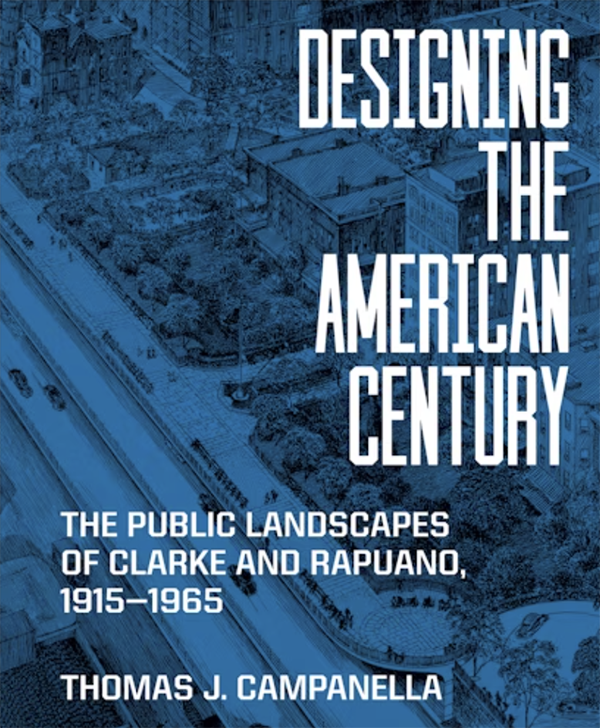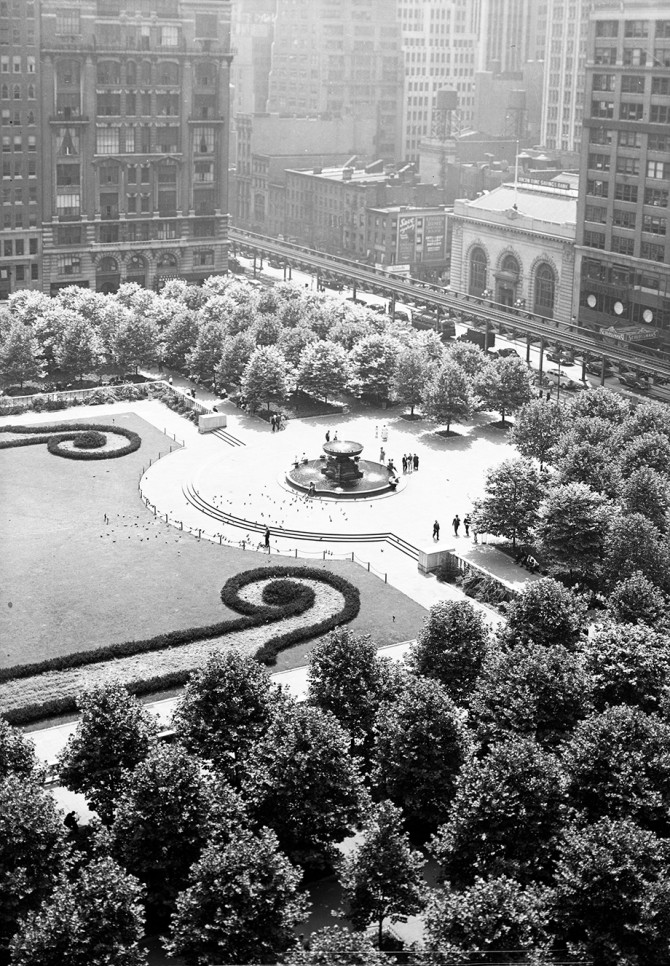A pair of Cornell alumni helped create some of New York City's most recognizable sights, from Bryant Park to the United Nations to the classic park bench - and yet have gone largely overlooked, according to a new book by a Cornell historian.
Gilmore D. Clarke, Class of 1913, and Michael Rapuano, Class of 1927, were the foremost spatial designers of the American Century, said Thomas J. Campanella, professor of city and regional planning in the College of Architecture, Art, and Planning and author of "Designing the American Century: The Public Landscapes of Clarke and Rapuano, 1915-1965," published in July by Princeton University Press.
Campanella's research reveals how Clarke and Rapuano's parks and parkways, highways, housing and urban renewal projects helped modernize the New York City metropolitan region - for better or for worse - while creating some of its most enduring landscapes.
Campanella spoke with the Chronicle about the book.
Question: Who were Gilmore D. Clarke and Michael Rapuano?
Answer: Clarke and Rapuano were both Cornellians, and they both trained in landscape architecture, though in Clarke's time, landscape architecture at Cornell was somewhat charmingly known as "rural art." By the time Rapuano was a student in the 1920s, the program had moved from what today is CALS to the College of Architecture, now AAP. Rapuano went on to win the 1927 Rome Prize in Landscape Architecture. He was a star student at both Cornell and the American Academy in Rome, so Clarke heard about Rapuano and hired him immediately after he returned home in 1930.
They worked together for several years in Westchester County, creating the first regional park system of the motor age. The parkways they designed provided the template for highways all over the world. With the coming of the Great Depression and all the New Deal public works underway in New York City (and the rest of the country), Clarke and Rapuano established a practice that quickly expanded to include urban design, civil engineeringand urban planning.
Clarke was also the first professor of City and Regional Planning at Cornell and later served as dean of the College of Architecture for many years. He effectively established the department where I teach today. He would commute from New York City twice a week on an overnight train called the Black Diamond - a luxury we no longer have.
Q: What do you mean when you say Clarke and Rapuano were "unsung giants," and why was their work overlooked if they made such a lasting impact?
A: Clarke and Rapuano helped create some of the most iconic public landscapes of mid-century New York City - Bryant Park, Cadman Plaza Park, the Brooklyn Heights Promenade, and the Jacob Riis and Flushing Meadows parks in Queens. The site plans for both the 1939 and 1964 World's Fairs, the first plan for what today is John F. Kennedy Airport, and even the U.N. Headquarters in Manhattan - all their work. You really can't throw a stone in New York today without hitting something Clarke and Rapuano created, right down to the city's most ubiquitous park bench model. And their impact extended far beyond New York. They designed parkways in Philadelphia and Washington, D.C., and made urban renewal plans for Portland, Nashville and Cleveland. Clarke personally chose the site for the Pentagon.
There are a couple of reasons that their contributions have been overlooked. Because these were enormous public projects requiring huge teams of people, discerning the precise role of the various parties involved has proven difficult for journalists and scholars. It is much easier to simply attribute all creative authorship for, say, a project like Riverside Park or the Henry Hudson Parkway, to the administrator at the top. In New York, it was often Robert Moses. Moses was a brilliant, if ultimately misguided, executive and smart enough to surround himself with gifted architects and engineers. But he was not himself a designer.
Q: What inspired your research into their story and contribution?
A: Well, 35 years ago, I began this project as my master's thesis at Cornell. I studied under Emeritus Professor Lenny Mirin, who, like me, is from Brooklyn. In the 1970s, he once took a class to visit Clarke and Rapuano's office. From Lenny, I realized that these two men shaped the New York I grew up in. I was astonished that no one had written about them. I mean, they were the Olmsteds of the 20th century! Here was this huge, glaring hole in the historiography of American urbanism. My book isn't the last word on the subject, but I like to think the hole has been plugged for now.
Q: What surprises, if any, came up for you while researching and writing this book?
A: One big surprise was how closely some of the more negative impacts of Clarke and Rapuano's projects affected my family. For example, my mother grew up in an impoverished neighborhood by the Brooklyn Navy Yard, which is now called Vinegar Hill. By the 1950s, one of Moses' huge urban renewal projects, the Brooklyn Civic Center, had leveled her neighborhood and effectively destroyed her childhood world. I discovered that Clarke and Rapuano were the project's master planners. Certainly not everything Clarke and Rapuano did was great. Millions of people still enjoy their parks and parkways, but they were also involved with some of the era's most egregious urban renewal projects.
Edith Fikes is a content strategist in the College of Architecture, Art, and Planning's Office of Communications.








